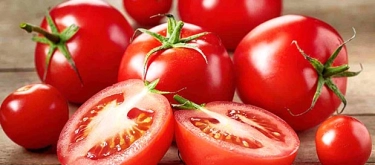Black Garlic: Taste Profile, Aroma, Benefits and Health Risks
Black garlic is aged, fermented garlic with a deep black color, rich flavor, and softer texture compared to raw garlic. Developed through a controlled aging process that involves heat and humidity, black garlic has become popular worldwide due to its unique taste and health benefits.
What does Black Garlic taste like?

Black garlic offers a unique combination of sweet, savory, and umami flavors with subtle hints of balsamic, tamarind, and molasses. Its taste is smoother and less pungent than raw garlic, making it suitable for a variety of culinary applications.
- Taste: Sweet and slightly tangy, with caramel-like notes and deep umami.
- Aroma: Mild and slightly earthy, lacking the sharpness of raw garlic.
- Texture: Soft, chewy, and almost jelly-like, unlike the crunchy texture of fresh garlic cloves.
In-Depth Flavor Analysis of Black Garlic
The complex flavor of black garlic results from the Maillard reaction, a chemical process triggered by heat that creates caramelized, sweet, and savory flavors. This reaction breaks down garlic’s natural sugars and amino acids, transforming them into a rich, umami-packed taste profile. The sweetness is mild and layered with tangy undertones, reminiscent of aged balsamic vinegar or tamarind, while the absence of raw garlic's harshness makes black garlic ideal for enhancing dishes without overpowering them.
The texture of black garlic contributes to its culinary appeal, as its soft and spreadable consistency makes it easy to incorporate into sauces, marinades, and spreads.
How Can Black Garlic Be Used in Cooking?
Black garlic’s sweet and umami flavors make it highly versatile in both savory and sweet applications:
- Sauces and Marinades: Blended into sauces, it adds depth and sweetness, especially in Asian-inspired dishes.
- Spreads: Mashed and spread on bread or crackers for a unique, flavorful appetizer.
- Dressings: Pureed into salad dressings for a touch of sweetness and savory complexity.
- Soups and Stews: Adds richness and umami without the sharpness of raw garlic, enhancing broths and stews.
- Meats and Seafood: Works well as a glaze or rub for meats and fish, creating a caramelized finish.
- Desserts: Occasionally used in chocolate or caramel-based desserts for an unexpected depth and mild sweetness.
Health Benefits of Black Garlic
Black garlic not only offers a unique flavor but also provides a variety of health benefits:
- Rich in Antioxidants: Contains twice as many antioxidants as raw garlic due to the fermentation process.
- Anti-inflammatory Properties: May help reduce inflammation and support immune function.
- Heart Health: Supports heart health by helping to regulate blood pressure and cholesterol levels.
- Supports Digestion: Easier to digest than raw garlic, making it a better option for sensitive stomachs.
- Immune Boosting: Contains compounds that may strengthen the immune system and protect against infections.

Are There Any Precautions When Consuming Black Garlic?
Black garlic is generally safe, but a few considerations include:
- Moderation: Excessive consumption may cause digestive discomfort.
- Allergy Risk: Those allergic to garlic should avoid black garlic as well.
- High Sugar Content: Black garlic has a higher natural sugar content, so diabetics should monitor intake.
How to Choose and Store Black Garlic?
- Choosing: Look for soft, dark cloves that are uniformly black. Avoid cloves that are overly dry or hard.
- Storage: Keep black garlic in an airtight container in a cool, dry place. Refrigeration can extend its shelf life for several months.
Fun Facts About Black Garlic
- Ancient Roots: Although popularized in recent years, black garlic has been used in Asian cuisine for centuries.
- Naturally Sweet: The aging process transforms garlic’s natural sugars, giving black garlic its unique caramelized flavor.
- Versatile Ingredient: Black garlic’s balance of sweetness and umami makes it popular in both high-end cuisine and home cooking.
Additional Nutritional Insights and Unique Varietal Details
- Core Composition:
Black garlic is made from fresh garlic that undergoes extensive fermentation, altering its chemical composition and producing new aromatic compounds. - Caloric Content:
Approximately 150–170 calories per 100 grams, largely due to the natural sugars developed during fermentation. - Micronutrient Profile:
Rich in vitamin C, certain B vitamins, and minerals such as selenium, calcium, and iron, black garlic's nutritional profile is enhanced by the fermentation process. - Antioxidant Potential:
The process increases levels of polyphenols and flavonoids, significantly boosting its antioxidant capacity. - Varietal Differences:
Different aging durations and conditions yield black garlic variants ranging from sweeter and milder to more intense with a slight tang. - Production Technology:
Control of temperature, humidity, and time during fermentation is crucial to achieve the desired flavor and texture. - Scientific Studies:
Recent research demonstrates that fermentation improves the bioavailability of active compounds, enhancing black garlic's health benefits. - Culinary Innovations:
Chefs are increasingly incorporating black garlic into innovative recipes, from savory sauces to unexpected applications in desserts, highlighting its versatility.
References
- Kim, J. & Lee, S. (2015). Fermentation Techniques in Garlic Processing. Seoul: Food Science Publications.
- Tan, P. (2016). "Chemical Transformations in Black Garlic." Journal of Culinary Science, 8(2), 134–142.
- Yamazaki, K. (2017). The Health Benefits of Fermented Foods: A Focus on Black Garlic. Tokyo: Nutritional Research Press.
- Saito, H. (2018). "Antioxidant Properties of Black Garlic: An Analytical Approach." Food Chemistry Reviews, 12(4), 210–218.
- Mori, T. (2019). Innovations in Garlic Fermentation: From Fresh to Black. Osaka: Culinary Innovation Books.
- Kobayashi, Y. (2020). "Sensory Evaluation and Consumer Acceptance of Black Garlic." International Journal of Gastronomy, 9(1), 55–63.
- Chen, L. & Wong, M. (2016). "Nutritional Profile and Functional Properties of Black Garlic." Nutrition & Food Science, 16(3), 189–197.
- Liu, X. (2018). The Transformation of Garlic: From Pungency to Sweetness in Black Garlic. Beijing: Asian Culinary Press.











